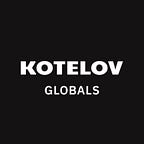5 ways to get more customers to the website using the Ben Hunt’s method
Hello, my name is Diana, I am a Project Manager at KOTELOV.
We often receive template requests for the website development, because many people have no idea about the target audience online behavior. We decided to share a summary from our webinar on how the Hunt’s theory helped a PM set a task from a client. Hope, you’ll find it useful, we don’t mind :)
What is the Hunt’s theory about?
The Hunt’s theory is largely a simple model demonstrating a potential customer journey to a purchase. His “ladder” helps create a website that covers a larger market segment and increases the target audience loyalty.
Audience does not realize the problem and is not aware of it. Stage 0
Stage 0 is the most difficult to attract target audience to the website. You have to invest some efforts to create a need for a product to attract them, i.e. to warm them up (we are not online marketing scammers, but this term fits here well).
You need to reach this group via large advertising campaigns that will highlight the problem for potential clients.
It’s worth to get back to this group when your business is well-established, you have money and are ready to spend it on targeting a new segment of the audience.
Client is aware of the problem but not of the solution. Stage 1
80% of people will google a solution after they encounter a problem. At this stage, “ the target audience can be lured to the website with the content that meets their needs.
Google Trends display popular query that help the audience find your website.
You need to optimize the pages of the website for keywords and make each page start with a problem discussion. In this way, you demonstrate your expertise and highlight the problem for a consumer.
Medicine brands work efficiently at Stage 1. There is lots of content from clinics and medical services for any query associated with diseases in the search engine.
Once the target audience is convinced that the problem exists, potential clients move to Stage 2.
Client is aware of some solutions but not of a specific one. Stage 2
At Stage 2, it is important for the group to find the most efficient solution to the problem. The audience is looking for possible solutions. Focusing on popular alternatives, they form a query in a search engine.
A website page describing various solutions to the problem may attract this audience. This can be an article covering all the methods from the cheapest to the most efficient (your product).
The owners often combine content for the audience at Stages 1 and 2 by identifying the problem in the first part of the article and offering solutions at the end.
A good example for these groups of clients can be found on this page:
What To Do When You Can’t Sleep
Active sales are not recommended at the first stages, because we just “onboard” a potential client. It is important to accept the presence of a problem and demonstrate your expertise at these stages.
Client is aware of the product but not of its benefits. Stage 3
Facts and proofs are important for the target audience at Stage 3. Your task is to convince potential buyers of the benefits of your product in comparison with competitors.
Don’t opt for an open comparison with competitors because it most often repels buyers.
It is important to have a dedicated product page listing not only its basic criteria like price, terms, volumes, quantity, etc., but also extra benefits and performance.
Describe more benefits, tell how and under what conditions one can and should use your product.
The audience can land on Stage 3 from other website pages or metasearch. Therefore, continue to “build” the text based in Google.
This is an example of how Nivea does it
Client is aware of the benefits but is not convinced. Stage 4
The best way to confirm the performance of a product is getting positive use cases, reviews or media references about your product.
For instance, it can be a dedicated content page on the website telling how the product successfully solves client’s problems. In this way, you can tell more about the product, eliminate natural fears, and highlight sensitive issues using the experience of other buyers.
You can use the reviews page to convince the client that your product has fans who are satisfied with the result.
Client wants to buy your product. Stage 5
Congrats! You have climbed to the last and most important stage. You need to close the deal at this stage: to conduct a sale on the website or to help the client contact you.
Feedback forms and checkout page will do at this stage. The most important task is to simplify the purchase as much as possible.
Checklist for PMs
The Hunt’s theory can be used as a checklist in the communication with a client when approving the terms of reference: you can explain the online behavior of the target audience and highlight the essential aspects of the website.
Not all the stages are to be covered in every situation — you might need to use just a few of them. Run experiments and test your hypotheses to determine the optimal number of pages for your website.
Our website KOTELOV only uses Stages 3 to 5. We target clients who are looking for a solution and don’t require explanations why custom development is needed. We back up our competence and expertise with case studies, reviews, and awards.
